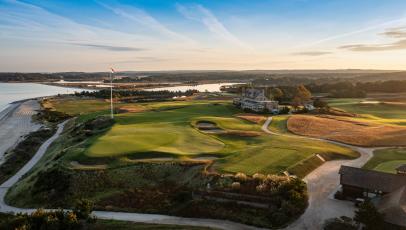Course Rankings
The best golf courses in France

French golf has gotten hot in the last several years. Thoughts of golf in Europe don’t typically concentrate on France, but quite a lot has happened in the last decade. In that time, the country has hosted two major international competitions, the 2018 Ryder Cup and the 2024 Olympics, both held at Le Golf National near Paris.
Two of the world’s premier golf architects, Tom Doak and the team of Gil Hanse and Jim Wagner, opened new courses, including Doak’s Grand Saint Emillionaise in Bordeaux in 2015 and Hanse and Wagner’s New Course at Les Bordes in 2021, which debuts at No. 6 in this year’s ranking.
And the Canadian Cabot group recently announced the acquisition of the former Golf du Medoc in Bordeaux, rebranded Cabot Bordeaux, along with its two courses designed by American architect Bill Coore and Canadian architect Rod Whitman. All of these courses continue to look up to two built by the great Tom Simpson in the 1920s, Morfontaine (No. 1) and Fontainebleu (No. 3).
Editor's Note: Our Best Courses in France ranking is the first in our rollout of the Best Courses in Every Country. Check back over the next few weeks for more of our rankings of the best golf around the world.
We urge you to click through to each individual course page for bonus photography, drone footage and expanded reviews. Plus, you can now leave your own ratings on the courses you’ve played … to make your case why your favorite should be ranked higher.




7. Saint-Germain
Saint-Germain-en-Laye, France

At Les Bordes, Hanse and design partner Jim Wagner were given a sand-based site—a golf architect’s dream—allowing for firmer, faster playing conditions. As you play the course, still in its infancy after opening in 2021, it feels as though the 18 holes were always there, and that there must’ve been little movement of the existing terrain. “We worked really hard to make sure our course sat softly in the landscape,” Hanse told Les Bordes. Whether by sprawling heathland or fescue-lined bunkering that’s rugged yet refined, the New Course not only sits softly in the landscape, it feels as though it is the landscape. Despite its moniker, the New Course is a return to an older, more classic style of golf course architecture. One that demands a more nuanced strategy than simply trying to avoid an imposing water hazard—and where angles, created by clever contouring and well-placed bunkering must be properly navigated in order to create the easiest shot into the green. And one that allows the golfer to run the ball up onto nearly every putting surface, incentivizing creativity while giving options to the higher handicapper. Even with all of the strategic elements, the New Course is incredibly walkable—in fact, it’s a walking-only course. The terrain has plenty of subtle undulations to create some blind shots, but there is hardly an elevation change that will leave you catching your breath.

5. Evian Resort G.C.
Évian-les-Bains, France

4. Saint Emilionnais G.C. (Saint Emilion)
Gardegan-et-Tourtirac, France

3. Fontainebleau G.C.
Fontainebleau, France

2. Paris International G.C.
Baillet-en-France, France

Explore our brand-new course reviews experience with individual course pages for bonus photography, drone footage and expanded reviews of top international courses and all 17,000-plus courses in the United States. Post your own ratings for courses you’ve played … and tell us where it should be ranked.





